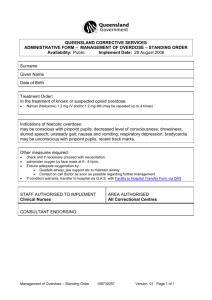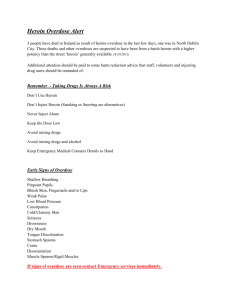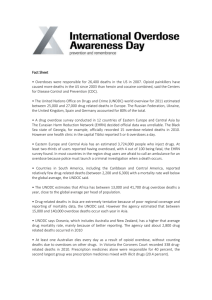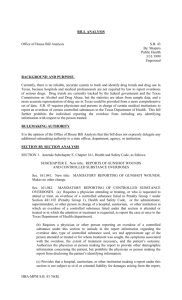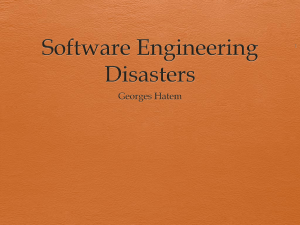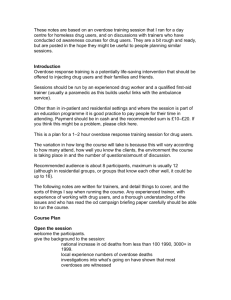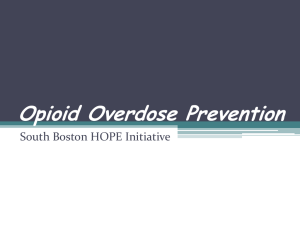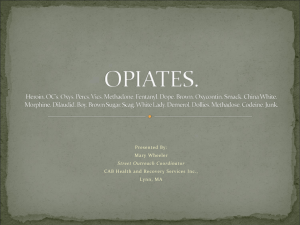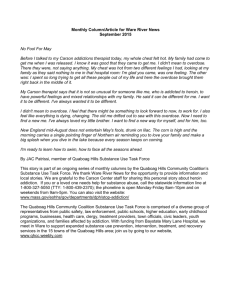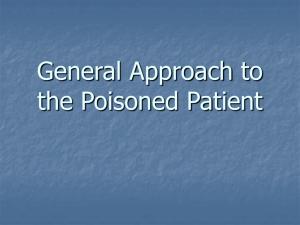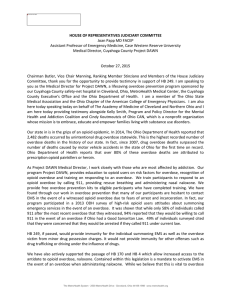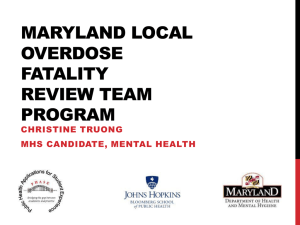Judiciary Committee I am Tony Grotrian, a father, a grandfather, a
advertisement
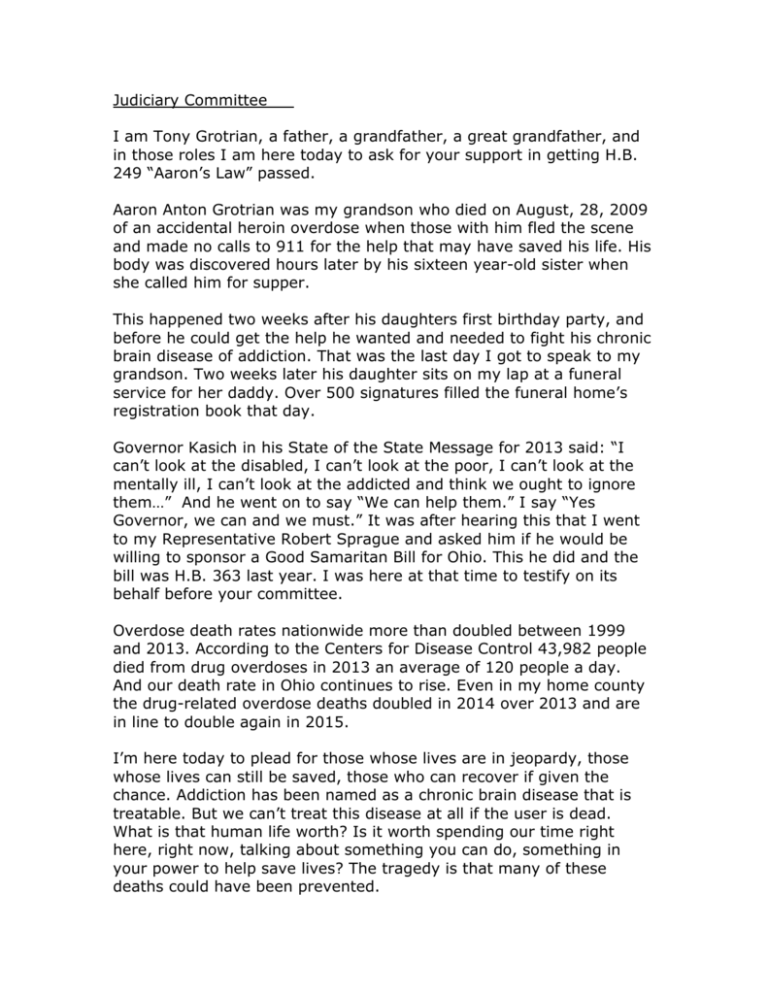
Judiciary Committee I am Tony Grotrian, a father, a grandfather, a great grandfather, and in those roles I am here today to ask for your support in getting H.B. 249 “Aaron’s Law” passed. Aaron Anton Grotrian was my grandson who died on August, 28, 2009 of an accidental heroin overdose when those with him fled the scene and made no calls to 911 for the help that may have saved his life. His body was discovered hours later by his sixteen year-old sister when she called him for supper. This happened two weeks after his daughters first birthday party, and before he could get the help he wanted and needed to fight his chronic brain disease of addiction. That was the last day I got to speak to my grandson. Two weeks later his daughter sits on my lap at a funeral service for her daddy. Over 500 signatures filled the funeral home’s registration book that day. Governor Kasich in his State of the State Message for 2013 said: “I can’t look at the disabled, I can’t look at the poor, I can’t look at the mentally ill, I can’t look at the addicted and think we ought to ignore them…” And he went on to say “We can help them.” I say “Yes Governor, we can and we must.” It was after hearing this that I went to my Representative Robert Sprague and asked him if he would be willing to sponsor a Good Samaritan Bill for Ohio. This he did and the bill was H.B. 363 last year. I was here at that time to testify on its behalf before your committee. Overdose death rates nationwide more than doubled between 1999 and 2013. According to the Centers for Disease Control 43,982 people died from drug overdoses in 2013 an average of 120 people a day. And our death rate in Ohio continues to rise. Even in my home county the drug-related overdose deaths doubled in 2014 over 2013 and are in line to double again in 2015. I’m here today to plead for those whose lives are in jeopardy, those whose lives can still be saved, those who can recover if given the chance. Addiction has been named as a chronic brain disease that is treatable. But we can’t treat this disease at all if the user is dead. What is that human life worth? Is it worth spending our time right here, right now, talking about something you can do, something in your power to help save lives? The tragedy is that many of these deaths could have been prevented. As of August 2015, 44 States have passed a Naloxone Access Law, and 32 States have passed a 911 Good Samaritan Law. These laws are saving lives all over our Nation. With our state going from 5th place to the 3rd worst state in the U. S. when it comes to accidental drug overdose deaths, can a 911 Law make a difference? I think it can. Witnesses to heart attacks rarely think twice about calling 911, but witnesses to an overdose often hesitate to call for help or, in many cases, simply don’t make the call. The most common reason people cite for not calling 911 is fear of police involvement. Yet I’ve been told by those in law enforcement that they are only there in an effort to save a life. Delaware became the 14th state last year to enact such a bill. Delaware’s bipartisan bill was not held hostage by fear that drug dealers would escape punishment. It passed because those in Del. believe that no person should die because of fear of criminal charges. According to Drug Policy Alliance, 88 percent of people who use opioids said they would be more likely and less afraid to call 911 in the event of a future overdose after learning of such laws. Today, 911 Good Samaritan policies are in effect on over 90 U.S. college campuses and have proven to encourage students to call for help in the event of an alcohol or other drug overdose. The policy prioritizes saving lives over arrests for possession. More Ohioans died of drug overdoses in 2014 than any year on record with 2,482 fatalities, a huge 17.6% jump. I quote: “Those are human beings behind those numbers, and those people have families. There’s no one thing that will eradicate this issue.” said Andrea Boxill, deputy director of the Governor’s Cabinet Opiate Action Team. And the numbers are rising. While overdose deaths in the state’s two largest counties, Franklin and Cuyahoga, dropped slightly last year, other areas more than made up the difference with deaths shooting up in Montgomery, Butler, Hamilton, Lucas and Summit counties. As an example: The coroner’s statistics from Butler County show heroin-related deaths jumped in two years from 30 to 103 in 2014 with 86 recorded already through the first six months of this year. Nearly 1,700 drug-exposed babies were born in Ohio in 2013, a nearly nine-fold increase from 2004 according to the Ohio Dept. of Health. This health issue is not just fueled by heroin, that is just one type of opioid killing Ohioans every day. In fact Ohio is losing its residents to drug-related overdoses to the tune of six a day or one every 4 hours. This bill is some protection to those using other drugs too. Years ago I adopted a credo as my own: I am only one, but still I am one; I cannot do everything, but still I can do something. And because I cannot do everything, I will not refuse to do the something I can do. In closing, let it be known that I felt I was alone in my quest to save lives last year, but the story is different this year. More and more grieving American parents are citing the cause of death in their obituary notices as a “heroin overdose.” Millions are angry, frustrated and feel no one recognizes the reality and the fear that our children could die. Approximately 85 million Americans say they have been affected a great deal by addiction as it crosses all social and economic boundaries, and in one way or another those that have signed our petition to get H.B. 249 “Aaron’s Law” passed have been affected by this health epidemic too. Today I have with me the signatures of more than ______ supporters from around our great state that feel and think as I do. This was something I could do, and I am no longer only one !
